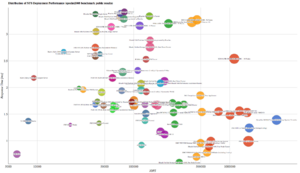Network File System facts for kids
Network File System (NFS) is a special way for computers to share files over a computer network. It was first created by a company called Sun Microsystems in 1984. With NFS, a user on one computer (called a client) can open, save, and manage files on another computer (called a server). It's almost like those files are stored right on their own computer!
NFS is an open standard, which means anyone can use and improve it. It's like a set of rules that helps different computers talk to each other about files.
Contents
How NFS Works
Imagine you have a big library of books. Instead of everyone having their own copy of every book, NFS lets everyone share books from one central library. When you need a book, you just ask the library for it.
NFS uses something called Open Network Computing Remote Procedure Call (ONC RPC). This is like a special language that computers use to ask each other to do things, like "get me that file!"
Different Versions of NFS
Over the years, NFS has been updated many times to make it better and faster.
NFS Version 2 (NFSv2)
The first public version of NFS was called Version 2. It came out in 1989.
- It worked mainly over a simple network connection called User Datagram Protocol (UDP).
- One big limitation was that it could only handle files up to 2 gigabytes (GB) in size. This was because of how it handled numbers, using 32-bit limits.
- Many smart people helped create NFSv2, including Russel Sandberg and Bill Joy.
NFS Version 3 (NFSv3)
NFS Version 3 was released in 1995. It brought some important improvements:
- It could handle much larger files, bigger than 2 GB. This was a huge step forward!
- It allowed servers to write data more efficiently, making things faster.
- It also started using Transmission Control Protocol (TCP) more often. TCP is a more reliable way to send data, especially over longer distances like the internet (WAN). This made NFS work better for computers far apart.
WebNFS
There was an extension to NFSv2 and NFSv3 called WebNFS. It made it easier for NFS to work through firewalls. Firewalls are like security guards that protect networks. WebNFS used a fixed port number (2049), which helped it get through firewalls more easily.
NFS Version 4 (NFSv4)
NFS Version 4 was a big change, first released in 2000. It was developed by a group called the Internet Engineering Task Force (IETF).
- It made security much stronger.
- It improved how fast files could be accessed.
- A major advantage is that it uses only one network port (2049) for all its services. This makes it much simpler to use across firewalls.
Later updates to NFSv4 include:
- NFS Version 4.1 (NFSv4.1): Released in 2010, this version added features for working with many servers at once. It introduced something called pNFS (Parallel NFS), which helps access files faster by splitting them across multiple servers.
- NFS Version 4.2 (NFSv4.2): Published in 2016, this version added even more features like copying files on the server side and better ways to manage storage space.
Where NFS is Used
NFS is used on many different types of computer systems. It's very popular in big computer networks and data centers.
Here are some operating systems that use NFS:
- Unix-like operating systems (like Linux distros, Solaris, FreeBSD)
- macOS (Apple computers)
- Microsoft Windows
- And many others like AmigaOS, IBM i, and OpenVMS.
How NFS Was Developed
The creation of NFS involved a lot of smart people and different companies working together. In the early days, there were different ideas about how computers should talk to each other. Sun Microsystems' ONC protocol became very popular.
Over time, the Internet Engineering Task Force (IETF) took over the development of NFS. This made sure that NFS remained an open standard that anyone could use and improve. This cooperation helped NFS become a widely used and important technology for sharing files across networks.
Other Related Technologies
Many other tools and protocols work with NFS or are similar to it:
- CacheFS: Helps speed up NFS by storing copies of files closer to the user.
- Hadoop Distributed File System (HDFS): Another way to store and manage very large files across many computers.
- Kerberos (protocol): A security system often used with NFS to make sure only authorized users can access files.
Images for kids
See also
 In Spanish: Network File System para niños
In Spanish: Network File System para niños



